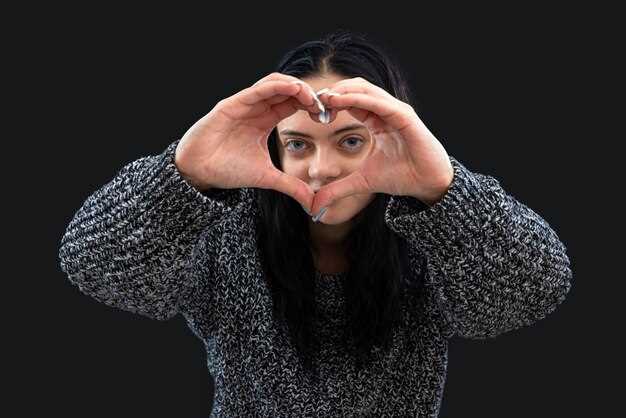Do this within two weeks: obtain baseline labs – total and free testosterone, SHBG, TSH, fasting glucose/HbA1c, prolactin, CBC and CMP – and review current prescriptions and supplements, including SSRIs, beta blockers, finasteride and recreational substances. These objective results help separate endocrine or metabolic drivers from relationship or psychological drivers; aim to have results and a medication reconciliation here so the treating clinician can recommend adjustments or referrals.
Address mood and behavior concurrently: reduced sexual interest isnt solely a biological problem. Screen for depression, anxiety, sleep apnea and alcohol dependence; use PHQ-9 and GAD-7 scores as quick baselines and repeat after 6 weeks of intervention. Cognitive behavioral therapy and targeted sex therapy improve outcome metrics in randomized trials; refer to a licensed therapist if scores remain moderate or worse. Practical steps to reduce physiological impact include stabilized sleep (7–9 hours), limiting nightly alcohol to zero–one drinks and treating obstructive sleep apnea if found.
Concrete communication tasks to do this week: set a 30‑minute meeting with the spouse, use “I” statements, list three concrete changes each is willing to try, and agree measurable benchmarks (frequency of physical affection, date nights, sleep hygiene). Everyone involved should keep a log of mood, libido and medication changes; this makes clinical finding of patterns faster and reduces misinterpretation of intent. If resentment or chronic conflict has been present, prioritize a couples session within one month.
Medical escalation and expected timelines: if labs show low testosterone or thyroid abnormality, endocrine referral within 2–4 weeks; if erectile dysfunction is present despite normal labs, urology referral and PDE5 inhibitor trial may be indicated. For primarily psychological drivers, expect partial improvement in 6–12 weeks with therapy and medication adjustments; if no measurable change after three months, reassess diagnostic assumptions. A patient I treated described “mine began after a major job change” – that temporal clue redirected work stress as the primary contributor.
Practical note on data and sources: clinical images and summaries available from sources such as getty illustrate common comorbidities but are not a diagnostic substitute. Unfortunately, abrupt shifts in intimacy often have multiple simultaneous aspects – biological, psychological and relational – so plan parallel tracks of assessment and intervention to improve outcomes and regain stability.
How to measure whether a man’s desire has dropped
Measure immediately and quantitatively: document baseline sexual initiation frequency and subjective desire scores, administer validated scales (SDI‑2 and IIEF), run targeted labs (total testosterone, morning LH, TSH, fasting glucose and HbA1c) and a PHQ‑9; if erectile complaints appear, order nocturnal penile tumescence or vascular studies at a specialist clinic and repeat assessments at 8–12 weeks.
- Weekly logs (objective): number of intimate encounters, number of times he initiated, number of morning erections – keep for at least 12 weeks to detect trends.
- Self-report metrics: 0–10 daily desire rating and SDI‑2; a sustained drop ≥30% in scale score or a ≥50% fall in initiation frequency across 3 months indicates a clinically meaningful decline.
- Clinical tests: total testosterone <300 ng/dL suggests hypogonadism; HbA1c ≥6.5% diagnoses diabetes; abnormal PHQ‑9 ≥10 indicates moderate depression that can affect libido.
- Differential clues: preserved nocturnal erections with low daytime desire points toward psychological causes; absent nocturnal erections with vascular findings points toward organic erectile dysfunction.
Assess context and contributors:
- Medication side: review prescriptions (SSRIs, beta‑blockers, finasteride) as common libido reducers; check recent dose changes or new drugs.
- Health events: recent surgery, new diagnosis of diabetes, chronic pain or major life stressors were often temporally associated with declines in desire in multiple academic studies.
- Relationship signals: track changes in communication frequency, time spent together, and expressed needs toward closeness; record examples of decreased affectionate gestures or avoidance of intimate talk.
Action thresholds and referral plan:
- If objective logs show a sustained decline by the numeric thresholds above, initiate labs and PHQ‑9 immediately and schedule a clinic referral within 4 weeks.
- If labs show low testosterone or uncontrolled glucose, treat medical condition first; then reassess desire after 8–12 weeks of therapy.
- If tests are normal but desire remains low and nocturnal erections are intact, prioritize psychological evaluation, couples therapy, and sex therapy focused on communication and esteem issues.
Practical prompts to use yourself and with a partner:
- Ask directly: “What changed in the last 3 months that might explain this?” – note answers and dates.
- Keep a neutral log rather than blame: record objective events and numbers throughout the monitoring period.
- Seek combined support: medical evaluation and parallel relationship work reduce the chance a treatable problem becomes a relationship breaker.
Red flags requiring urgent attention: sudden loss of libido with erectile pain or weight loss, new diabetes diagnosis, or suicidal thinking on PHQ‑9 – then contact primary care or emergency services for rapid management.
Simple behavioral checklist for decreased sexual interest
Implement a weekly 15-minute check-in with your partner to talk about energy, mood and sexual interest; use that slot to ask what each wants and how much effort feels realistic.
Measure frequency of intimate contact before and after major life events, which makes it possible to spot when declines happen and whether they are transient fluctuations or persistent lack.
Log three concrete signs over four weeks: number of initiated touches, number of conversations about intimacy, and number of refusals; these measures indicate whether avoidance is behavioral, emotional or medical.
Assess medical and lifestyle aspects: check blood pressure, diabetes control, medications, alcohol intake and heart symptoms – each can be a libido breaker or cause erectile dysfunction and should prompt further evaluation.
Watch behavioral style cues: patient, distracted, or irritable responses during affectionate moments actually indicate reduced interest more reliably than single rejections; note patterns while avoiding blame.
| Sign / Measure | What it indicates | Action |
|---|---|---|
| Initiations per month < baseline | Behavioral withdrawal or relationship strain; statistics often show declines after illness or new parenting | Schedule shared activities, increase nonsexual touch, track weekly |
| Conversations about intimacy: 0–1/week | Lack of communication; may indicate avoidance or embarrassment | Agree on one neutral check-in question, use “I” statements, be patient |
| Alcohol use spike | Physiological breaker of arousal and performance | Limit alcohol before evenings together, re-measure after 4 weeks |
| Blood sugar out of range (diabetes) | Biological contributor to erectile dysfunction and low libido | Refer to primary care, adjust meds, target glycemic control |
| Large mood fluctuations | May indicate depression, stress or hormonal shifts | Offer support, suggest screening, consider professional help |
Use concrete targets: increase affectionate touches by 30% in four weeks, add one open conversation per week, or reduce alcohol evenings by half; measure change and review outcomes together.
If multiple signs indicate biological contributors (heart, diabetes, medications), arrange medical review; if signs are mostly conversational or emotional, focus effort on communication and shared activities and consider couple therapy if progress stalls.
Keep a short shared log and be patient: small, consistent changes actually make partners feel safer, which often makes desire more likely to return; if no improvement after three months, seek further assessment.
Questions to tell reduced desire from temporary stress or fatigue
Recommendation: keep a 14-day log of concrete markers – sleep hours, energy level (1–10), morning erections, mood swings, medication changes, and work pressure – then answer the checklist below to separate short-term fatigue/stress from longer-term low libido.
-
Sleep & physical recovery
- Have you slept less than 6 hours on most nights over the past 2 weeks?
- Do you feel quite exhausted throughout the day, needing naps to function?
- Have physical workouts or physical intimacy felt harder after activity?
- Is your resting heart rate persistently higher than your normal baseline?
- Do you notice dizziness, fainting, or other signs that could indicate blood pressure or blood sugar issues?
-
Stressors & environment
- Has work pressure been higher recently, or has a dominant deadline created sleepless nights?
- Have you had new financial, caregiving, or legal demands that havent eased after a few days?
- Do you feel your mind is occupied with non-sexual images or worries during intimate moments?
- After a major stressful event, did your libido drop immediately and stay low for less than a month?
-
Mood, relationship & self-view
- Are mood swings, irritability, or low motivation the main change rather than a shift in who youre attracted to?
- Has self-esteem fallen sharply due to a recent setback, and could that be causing withdrawal?
- Do you still want closeness but couldnt summon sexual interest or feel horny?
- Is physical affection (holding hands, kissing) still pleasant while sexual desire is reduced?
-
Medication, alcohol, substances & health
- Did a new medication start within the past month, or did a dose change happen before the drop?
- Are there side effects listed for that medication that include decreased libido or erectile change?
- Has alcohol, cannabis, or other substance use increased after a stressful period?
- Have you had recent blood work or cardiovascular checks; any abnormal thyroid, testosterone, or blood glucose results?
-
Pattern & time course
- Did the change happen suddenly after a specific event or gradually over many months or past years?
- If the situation causing stress eased for a week, did desire begin to recover without intervention?
- Are low-interest days clustered around high-pressure periods rather than constant across weeks?
- Do sexual thoughts still occur in other contexts (porn or fantasy) but not with your partner?
Interpretation guide: if 6+ answers point to sleep disruption, higher pressure, recent medication, or short-term mood collapse and the pattern is under 4 weeks, the problem is quite likely temporary stress/fatigue. If changes are gradual, persistent beyond 6–8 weeks, linked to chronic health markers (abnormal blood tests, sustained low heart rate variability, endocrine signs), or youre reporting constant lack of arousal across all contexts, consider clinical evaluation.
- Immediate actions: improve sleep (aim 7–9 hours), reduce stimulants after 3pm, limit alcohol to <2 drinks on high-stress days, schedule a 48–72 hour rest block to see if libido rebounds.
- If medication is suspect, talk to the prescriber about alternatives or dose timing; watch for sexual side effects documented as a known источник in drug information.
- Order basic labs (CBC, TSH, fasting glucose, lipid panel, testosterone) and check blood pressure; abnormal results create objective reasons to refer to cardiology or endocrinology.
- If answers point to relationship strain rather than pure fatigue, try a low-pressure intimacy plan: short affectionate touch, explicit permission to stop anytime, and avoid performance talk.
Follow-up rule: if targeted changes (sleep, substance reduction, brief medication review) do not produce measurable improvement in 2–4 weeks, schedule a medical or mental-health consultation to test biological causes and discuss therapy; dont wait beyond 8 weeks without assessment.
How changes in frequency differ from a true libido loss
Measure change: keep a simple log of sexual events, spontaneous sexual thoughts, and context for 6 months; if low interest persists across situations and is accompanied by erectile difficulties, persistent fatigue, pain, or new mood symptoms, schedule clinic assessment (NHS: https://www.nhs.uk/conditions/low-sex-drive/).
Frequency can fall without true loss of desire. Common drivers include work pressure, caregiving time between shifts, acute illness, temporary medications, alcohol, or conflicts with partners. These situational changes often shift activity toward specific periods and then recover after stressors resolve. A pattern that varies with cycles like travel, deadlines, or new baby care would indicate situational reduction rather than a global drop in libido.
True diminished sexual desire shows specific features: reduced spontaneous sexual thoughts, little or no interest in sex across partners or contexts, and persistence for at least six months on multiple occasions. Diagnostic guidance from academic and psychiatric sources requires symptom duration and associated distress; absence of distress or clear external causes often argues against a primary desire disorder.
Clinical evaluation should include targeted questions about erectile function, pain with intercourse, feeling of avoidance, and whether someone couldnt or wouldnt engage despite opportunities. Physical exam and blood testing should include morning testosterone, estrogen where relevant, prolactin, thyroid function, and blood glucose and lipids because heart and metabolic conditions often affect libido. Medication review is essential–SSRIs, some blood pressure drugs, and antihistamine products can reduce desire.
Practical steps to try before labeling true libido loss: reduce sleep deprivation and fatigue, limit alcohol, schedule intimate time together, try lubricants or other products to reduce pain, and practice open talking about sexual needs. If partners learned patterns of avoidance, couples therapy can reestablish connection. If erectile problems persist or blood markers are abnormal, refer to a sexual health center or cardiology clinic for further workup.
Use concrete thresholds: situational drops that resolve within weeks to a few months usually dont reflect a biologic loss; persistent lack of sexual interest across contexts for six months or more, with supportive lab or exam findings, does indicate a disorder that may need medical or psychosexual treatment. Offer short-term tips (better sleep, fewer stimulants, scheduled intimacy) while arranging further assessment if there is ongoing worry or distress.
Signs that warrant a professional assessment
Seek a combined medical and mental-health assessment when libido falls by more than 50% over three months and intimacy, mood, work performance or sleep are impacted; document frequency, context and degree to measure severity.
Concrete thresholds that often indicate need for referral: persistent change lasting >12 weeks; morning total testosterone <300 ng/dL on at least two samples; PHQ-9 score ≥10 suggesting moderate depression; erectile failure in ≥50% of attempts or absence of nocturnal erections on two separate nights. Note that SSRIs and antipsychotics reduce libido in ~30–50% of users, and heavy alcohol use (>14 standard drinks/week) correlates with higher risk.
Look for physical signs that mean a medical contributor may exist: unexplained weight gain, reduced muscle mass, gynecomastia, fatigue, hot flashes, new erectile dysfunction, or metabolic markers such as fasting glucose ≥126 mg/dL or HbA1c ≥6.5%. Sleep apnea, hypothyroidism and hyperprolactinemia are common, treatable causes; an endocrine panel (morning total testosterone, SHBG if needed, TSH, prolactin), basic metabolic screen, lipid panel and HbA1c are recommended.
Relationship indicators that suggest specialty input include persistent avoidance of intimacy, increased criticism, changING sexual scripts between partners, or repeated statements that attraction is the same but behaviour has stopped; those patterns often reflect underlying stress, unresolved conflict or comorbid psychiatric illness. Measure interaction frequency and affect on a weekly log over 4–6 weeks to give clinicians objective data.
Immediate actions to discuss with a clinician: review current medications with the prescriber, screen for depression and anxiety, obtain targeted labs, and consider sleep study if daytime sleepiness or high BMI present. If medical tests are normal, refer to a certified sex therapist or couples counsellor; a urology or endocrine consult will then address abnormal labs or persistent physiologic deficits.
Patient tracking improves diagnostic yield: record daily drive on a 0–10 scale, number of intimate attempts, presence of erections, substance use and stressors. This log will help clinicians discover patterns and learned associations between pressure, mood and sexual response.
Expect timelines: medication-related low libido probably improves within 6–12 weeks after adjustment; hormonal replacement or targeted medical treatment may show physically measurable improvement within 8–12 weeks, while psychosexual therapy often requires 8–20 sessions. Use objective measures and follow-up labs to determine higher-risk trajectories and next steps.
Clinical teams frequently use validated instruments and bedside measures rather than assumptions; supplying concrete data, concise history and a short symptom log will accelerate understanding and appropriate care. (getty)
Medical, hormonal and medication-related causes to check
Obtain morning total testosterone (drawn 7–10 AM) and repeat on a separate day; total <300 ng/dL on two same assays indicates biochemical hypogonadism and needs endocrinology referral, especially when libido has dropped over months or years.
Review current medications with the prescribing clinician: SSRIs (sertraline, paroxetine), SNRIs, 5‑alpha‑reductase inhibitors (finasteride), opioids, spironolactone, some antihypertensives and isotretinoin all probably causing sexual side effects such as decreased desire, erectile dysfunction, delayed ejaculation or anorgasmia.
Do not stop prescriptions abruptly; only cease or switch as told by the prescriber and consider alternatives more compatible with sexual functioning (bupropion, mirtazapine, changing antihypertensive class) or dose reduction under supervision; insurance policy may require prior authorization for some options.
Order LH, FSH, prolactin, TSH and free T4, fasting glucose or A1c and lipid panel: prolactin >20 ng/mL suggests hyperprolactinemia, TSH outside 0.4–4.0 mIU/L indicates thyroid dysfunction and A1c ≥6.5% means diabetes that commonly coexists with sexual issues and reduced testosterone production.
Assess stress, mood fluctuations and past psychiatric history; chronic pain or pelvic pain that feels severe will reduce spontaneous wanting and creates pressure during intimacy, so refer to a sexual medicine center when pain persists beyond expected timeframes.
If labs are normal then evaluate chronic conditions (diabetes, cardiovascular disease) and review symptom chronology over past months to years; persistent low libido despite normal testing probably requires combined medical and psychosexual interventions to keep intimacy alive.
Expect partial improvement within 6–12 weeks after medication change or targeted endocrine therapy, with larger gains by 3–6 months when lifestyle measures are added: 5–10% weight loss, resistance training, 7–9 hours sleep, reduced alcohol and smoking; use PDE5 inhibitors when erection issues coexist but note they are not compatible with nitrates and require the right specialist input.
Which blood tests to request and what abnormal results mean
Recommendation: Order morning (08:00–10:00) fasting total testosterone, free testosterone (direct or calculated), SHBG, LH, FSH, prolactin, TSH and free T4, morning cortisol, fasting glucose and HbA1c, CMP (liver, kidney, electrolytes), lipid panel, CBC, vitamin D, and PSA in older patients.
Total testosterone quite low when <300 ng/dL (≈10.4 nmol/L); interpret whether the low result is reproducible with a repeat morning draw. Compare LH and FSH: high gonadotropins point to primary testicular failure, low or inappropriately normal values indicate secondary hypogonadism and require pituitary assessment and medication review.
Prolactin >20 ng/mL suggests hyperprolactinemia and prompts pituitary imaging; markedly elevated prolactin can make someone less interested in sexual activity. TSH >4.0 mIU/L with low free T4 shows hypothyroid physiology that reduces sexual drive; low morning cortisol (<5 μg/dL) raises concern about adrenal insufficiency while very high cortisol (>25 μg/dL) suggests excess cortisol exposure.
Fasting glucose ≥126 mg/dL or HbA1c ≥6.5% meets criteria for diabetes; insulin resistance and diabetes are related to reduced erectile function and lower libido. Measure resting blood pressure – readings >130/80 mmHg qualify as hypertension and many antihypertensive agents change sexual response and sexual feeling.
SHBG shifts alter the relationship between total and free testosterone: low SHBG (obesity, insulin resistance) can make total appear low despite adequate free levels; high SHBG (liver disease, some medications) can raise total while reducing free fraction. Expect fluctuations in hormones with acute illness, opioid or steroid exposure, sleep disruption and weight change; sometimes repeating tests after 2–4 weeks is helpful.
Lab results must be integrated with history: low labs often correlate with reduced sexual drive and less horny feeling, but psychosocial issues frequently contribute. Ask whether the patient wants treatment, whether a partner or someone close has noticed changes, and what kind of treatment the patient is interested in. Patients may say “it’s mine” about their symptoms; clinicians should not dismiss that report or worry solely about numbers. nagoski said subjective context matters – interpret objective abnormalities between labs and behavior, address things such as sleep apnea, medications, diabetes management, and blood pressure control, and recognize that even small hormonal fluctuations can make a meaningful difference in sexual drive.
Common prescription drugs that blunt sex drive and alternatives to discuss
Ask prescriber to review current medication list and prioritize adjustments that restore sexual desire while maintaining safety.
SSRIs (sertraline, paroxetine, fluoxetine) and SNRIs (venlafaxine, duloxetine) commonly cause lower arousal, delayed orgasm and decreased libido; academic reviews report sexual side effects in roughly 30–70% of treated patients. Practical alternatives include switching to bupropion or mirtazapine, or adding bupropion as an adjunct; if depression control relies on an SSRI, dose reduction or trial of vortioxetine can produce different results. источник: peer‑reviewed summaries learned these rates.
Antipsychotics that elevate prolactin (risperidone, paliperidone) reduce testosterone and sexual interest; consider aripiprazole or quetiapine as alternatives with lower prolactin impact, or discuss endocrine referral if prolactin remains high. If prolactin suppression isnt the issue but sedation is constant, dose timing or switching to a less sedating agent can reduce fatigue and improve spontaneous arousal.
Opioids (methadone, oxycodone) and some anticonvulsants (valproate, carbamazepine) blunt libido and impair testosterone. For chronic opioid therapy, buprenorphine may produce less hypogonadism; assess morning testosterone, prolactin, TSH and HbA1c right away if sexual changes appear. Diabetes increases neuropathy risk and contributes to erectile problems and lower arousal, so optimize glycemic control as part of the plan.
Antihypertensives: older beta‑blockers and thiazide diuretics can cause erectile dysfunction in some patients. Swap to ACE inhibitors, ARBs or calcium channel blockers when clinically appropriate; nebivolol has a better sexual side effect profile than traditional beta‑blockers. Discuss these options with the clinician who manages cardiovascular health.
Finasteride and spironolactone produce persistent lack of libido and erectile issues in a minority of users; if sexual symptoms havent improved after stopping, evaluate anatomy and pain contributors such as pelvic floor dysfunction, vaginismus or chronic pelvic pain syndromes. Refer to pelvic physical therapy or a pelvic pain specialist when pain or anatomic pain generators are present.
Short‑term tactics to regain sexual function include adding tadalafil (5 mg daily or 10–20 mg PRN) for erectile problems, consideration of transdermal testosterone when documented hypogonadism exists, and use of bupropion to counter SSRI‑related sexual dysfunction. Avoid PDE5 inhibitors alongside nitrates; discuss cardiac risk prior to prescribing.
Assessment checklist: medication list that includes drug names and doses, labs (testosterone, prolactin, TSH, HbA1c), screening for fatigue, pain and mood symptoms, and sexual history that captures spontaneous versus situational arousal and times of day when interest peaks. If you havent had baseline labs, order them; learn whether changes began after a new drug started or dose increased, since timing often reveals the main reasons. Bring these results and thoughts to the prescribing clinician and sexual health specialist to make an evidence‑based plan that matches anatomy, health status and patient goals.















